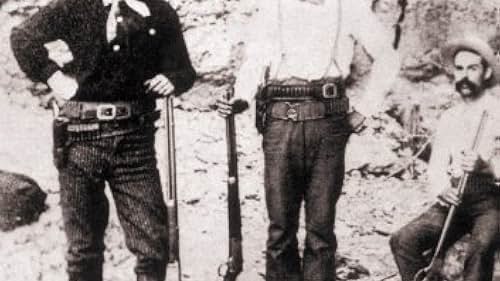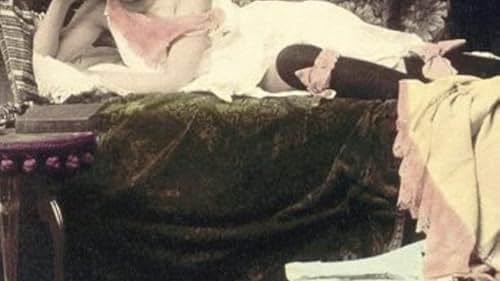Top-rated
Sun, Aug 24, 2003
This episode talked about the various methods used by outlaws (no one ever rode a horse up to a moving train and jumped aboard to rob it except in the movies) and new tools they used and the impact. This includes dynamite, smokeless gun powder, telegraph lines, and other items. There is also some discussion how the changing technology such as the telegraph, pictures on wanted posters,telephone, and finally the automobile was used against the outlaws and ended the romance of the outlaw.
Top-rated
Mon, Aug 18, 2003
The key to the west was the use of guns and their rapid development. The traditional quick draw gunfight was very rare in the west. If you wanted to shoot someone, you usually did it from cover or distance. The first recorded quick draw involved Wild Bill Hickock in Missouri in 1865. He was a fast and deadly accurate shooter. In 1836 the Colt Patterson revolver was introduced which started revolutionary changes in gun development. It played an important role in defending against Indians used bows and arrows which could be shot very fast and had developed tactics based on single shot guns that took time to reload. To produce the gun Colt created lathes, other tools, and used the assembly line to keep up with demand. Pistols changed rapidly for the next 30 years as technology improved. In 1854 the introduction of the self contained cartridge made repeating guns easier to develop and use. The Henry Rifle was the first practical repeating rifle introduced in 1860. It, too, had a major impact on battles with Indians. It was followed in 1873 with the Winchester which became the standard. Holsters also under went several advancements in the second half of the 19th century. However, wearing guns openly in town in the west was normally illegal. Instead, people carried small guns hidden in pockets and waistbands. Cowboys wore their guns openly as they were in the country. In the OK Corral shootout the Earp group wore hidden guns while the cowboys wore theirs in the open. John Wesley Hardin was one of the most prolific killers having killed his 40th man on his 21st birthday. The other gun that was popular due to its easier use was the shotgun used by Billy the Kid in his jail break.
Mon, May 3, 2004
The show covers aspects of the prostitution business in the wild west. It starts with the lack of women in the west relative to the number of men after the 1849 gold strike. Prostitutes worked at different levels starting at the top with brothels, saloon women, crib workers, and finally the street walkers at the bottom level. The poor working conditions of the women are covered along with the filthy state of their clients. Their strategic placement in red light districts along with how the red light name was derived from the rail workers red signal lanterns hanging outside the women's businesses. Perceptions of beauty or more importantly the lack of beauty standards of the day are covered. Treatments of the day for STDs are described along with the limited means to prevent them. Methods of birth control, abortion, and drug use are mentioned. The importance of prostitution as a key component of the economy of the times is stressed along with being one of the few livelihoods available to poor unmarried women of the west.
Mon, May 17, 2004
The show covers the changes in the railroad industry from the 23 miles in 1830 to the 200,000 miles by 1900. It starts with a basic explanation of how a steam locomotive works and the dangers involved including boiler explosions. The various dangers faced by passengers in train travel including rail design, bridge collapses, exploding boilers, and burning train cars are detailed along with changes over time to reduce them. Dangers faced by railroad employees which include brakemen setting brakes by hand and holdup men robbing express man agents are covered. The show ends with the last classic train robbery in 1912 in Texas and how technology played a role in stopping it.


